#jean hagen
Text
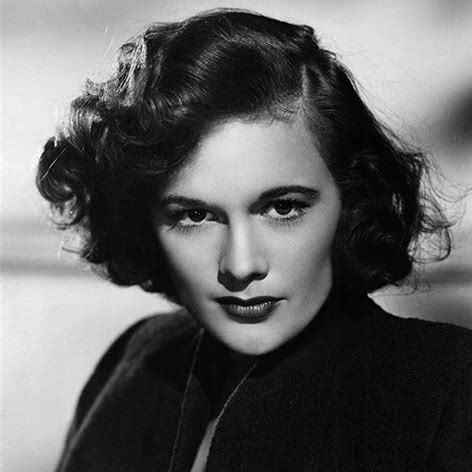

Propaganda
Jean Hagen (The Asphalt Jungle, Singin' in the Rain)—a shimmering star in the cinema firmament! Absolutely iconic as the villainess Lina in singin’ in the rain and makes the picture, to be honest. Nobody played funny-evil-gorgeous the way she does. and that voice!
Nargis Dutt (Shree 420, Barsaat, Awaara)— I first loved her because she played such strong characters in everything I saw her in, but beyond that, she has a natural charm to her. She's a Bollywood icon for a reason!
This is round 2 of the tournament. All other polls in this bracket can be found here. Please reblog with further support of your beloved hot sexy vintage woman.
[additional propaganda submitted under the cut.]
Jean Hagen:

Riddle and you shall receive! How could we forget about Jean Hagen! I love a woman who can play really delightfully evil, and it's very fun seeing her other roles after you've seen her as Lina Lamont. Also, she's got an adorable smile and a gorgeous chin.
Her Oscar-nominated performance as Lina Lamont is a wonderful example of being talented enough to make an unsympathetic character difficult to hate. Admittedly her looks also help a lot - in so many films she would have been the romantic lead and it's a shame Lina didn't get a redemption arc.
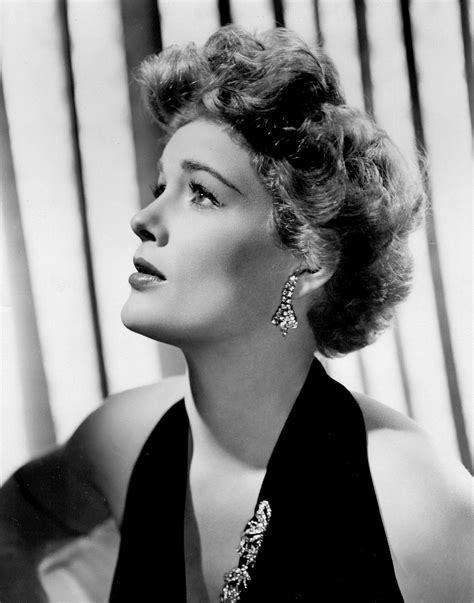
Had a sexy sexy alto register so when she was being dubbed as Lina Lamont by Debbie Reynolds she was dubbing Debbie Reynolds dubbing her. Shoutout to Betty Noyes also.
Linked gifset
did. is anyone. can we please bring attention to her in drag. please god and thank you

If we bring a little joy into your humdrum lives, it makes us feel as though our hard work ain't been in vain for nothin!
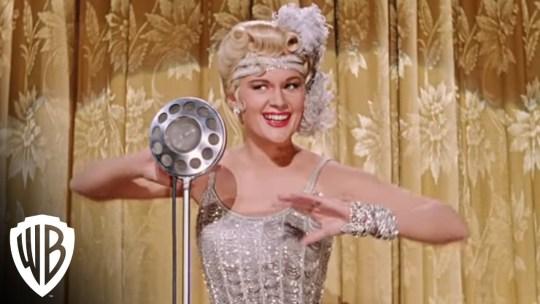
Nargis Dutt:
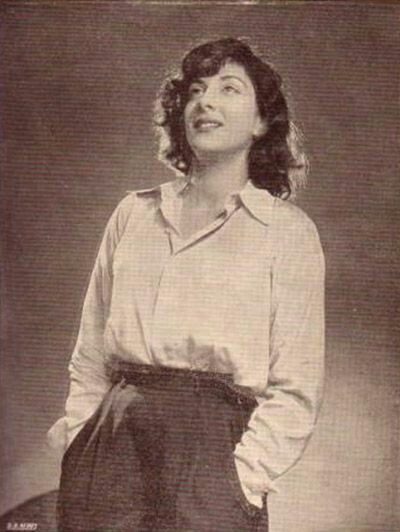
youtube

152 notes
·
View notes
Text


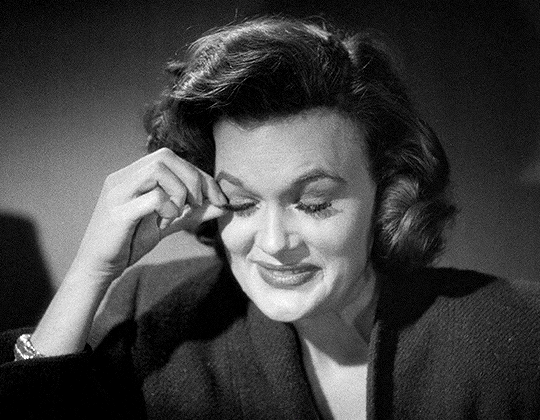
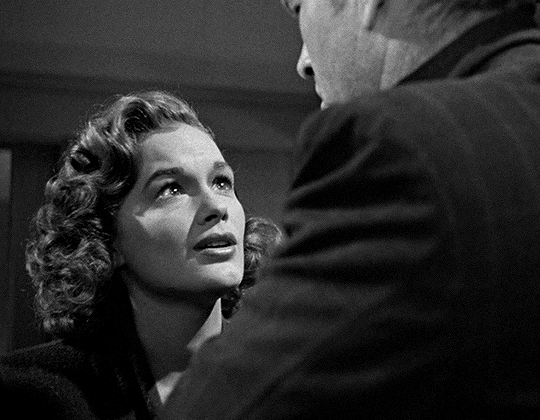
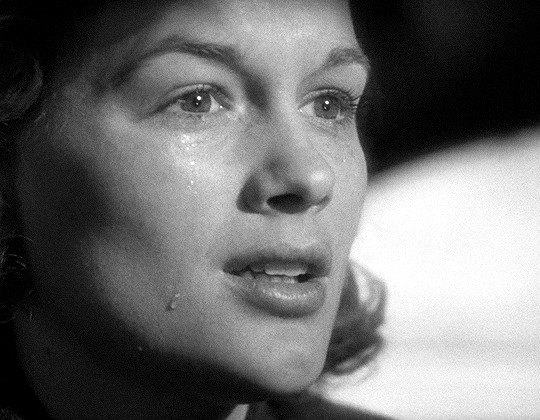


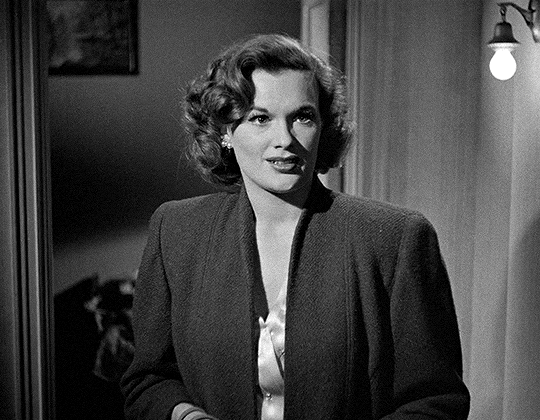
JEAN HAGEN as "Doll" Conovan in
THE ASPHALT JUNGLE (1950) dir. John Huston
#filmedit#filmgifs#filmblr#classicfilmblr#classicfilmedit#oldhollywoodedit#classicfilmsource#cinemaspast#jean hagen#the asphalt jungle#1950#1950s#*mygifs#*noirvember#*noirvember23
305 notes
·
View notes
Text







Gene Kelly and Stanley Donen‘s SINGIN’ IN THE RAIN premiered at NYC’s Radio City Music Hall #OnThisDay in 1952.
65 notes
·
View notes
Text
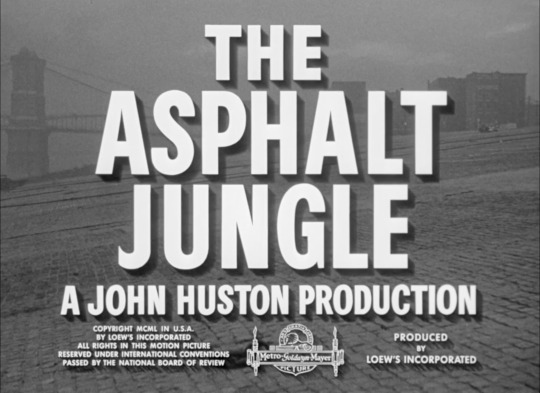
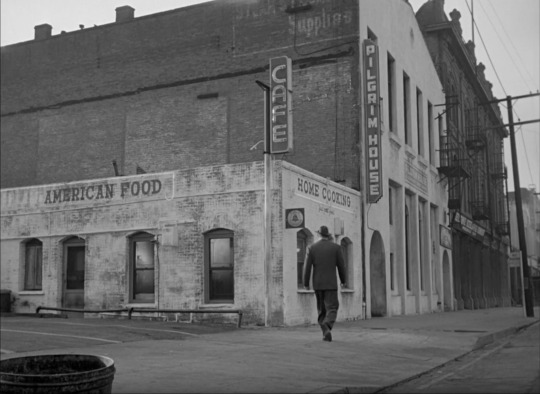
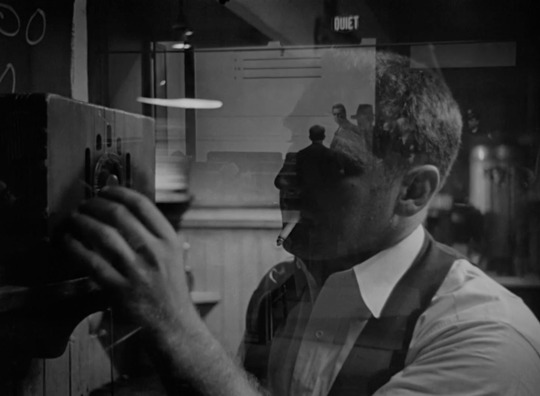
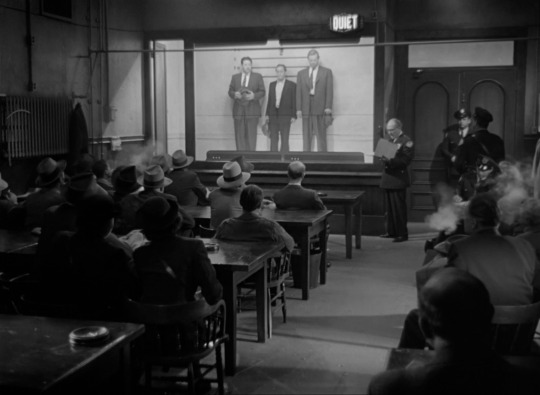
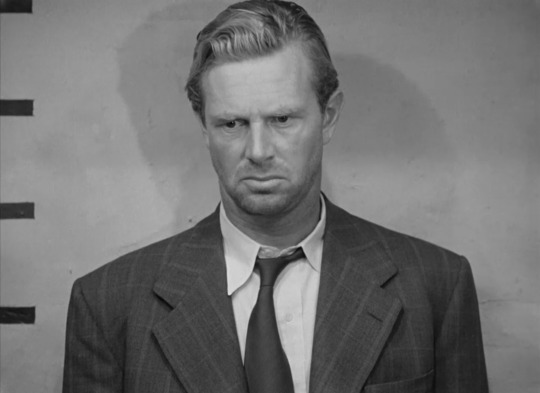

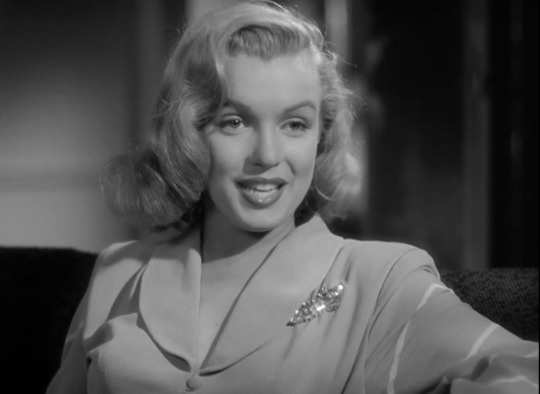
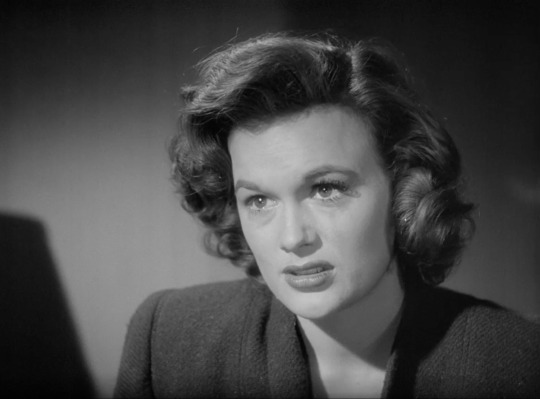
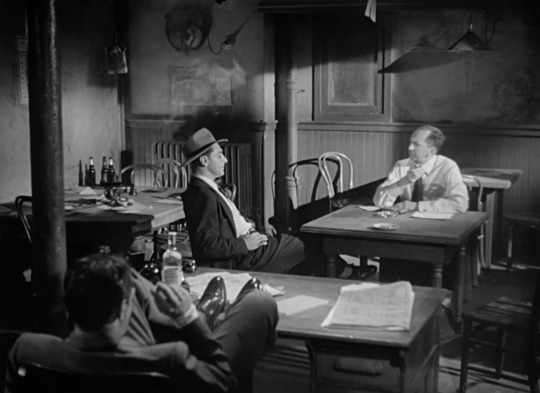




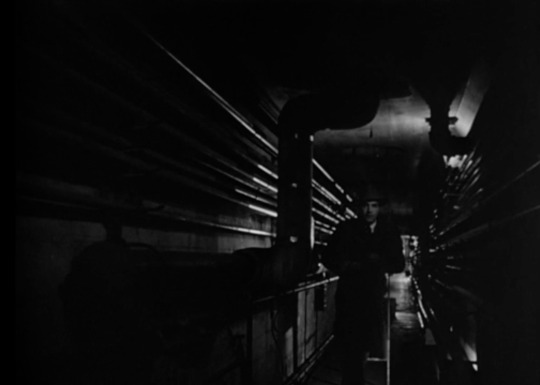







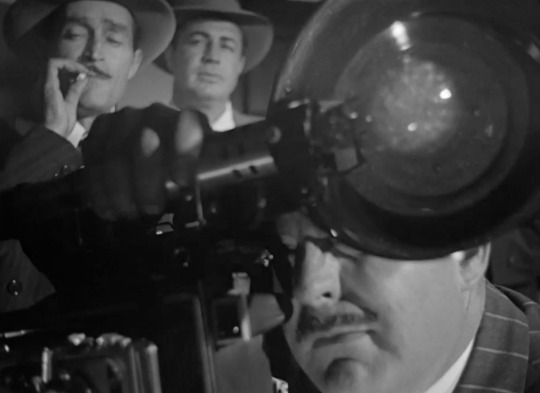



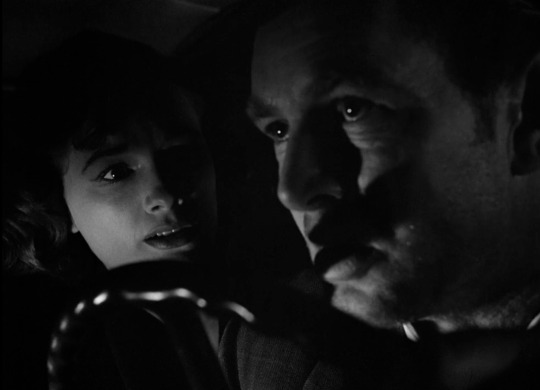
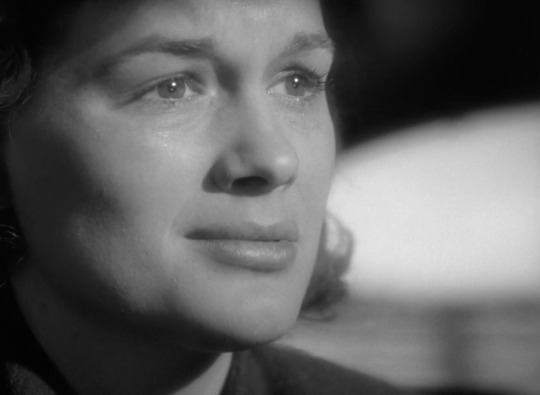
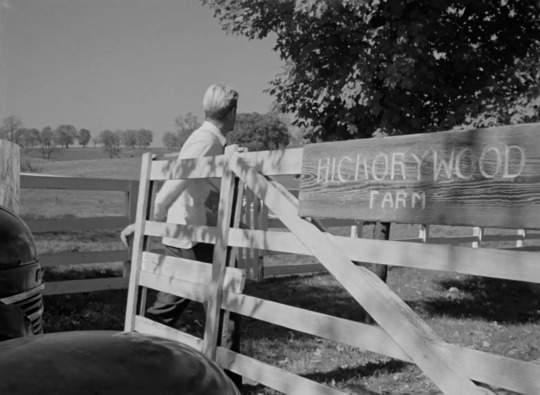

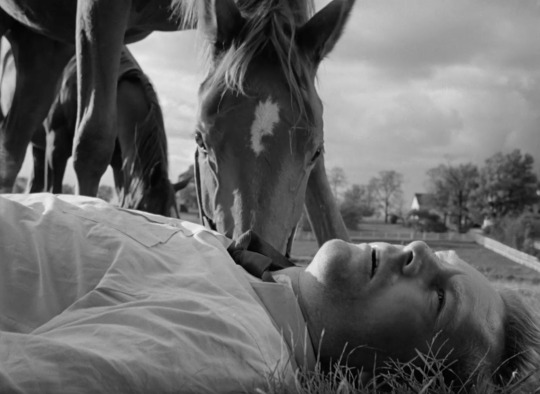
Asphalt Jungle (1950)
Director: John Huston
Cinematographer: Harold Rosson
Starring: Sterling Hayden, Jean Hagen, Louis Calhern, James Whitmore, Sam Jaffe, John McIntire, and Marilyn Monroe
#asphalt jungle#1950#film noir#marilyn monroe#classic hollywood#john huston#classic film#jean hagen#sterling hayden#louis calhern#crime movies#heist movie#crime film#50s cinema#50s films#50s movies#old hollywood#noir#Harold Rosson#cinematography#black and white film#black and white aesthetic
65 notes
·
View notes
Text

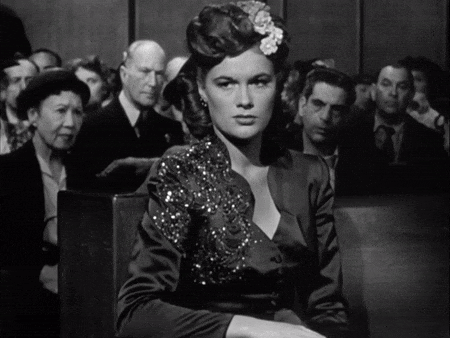
JUDY HOLLIDAY & JEAN HAGEN in ADAM'S RIB (1949)
#sorry sorry if this is already out there a bunch but it made me so happy <3 a suit moment :))#judy holliday#jean hagen#adam's rib#film
159 notes
·
View notes
Text




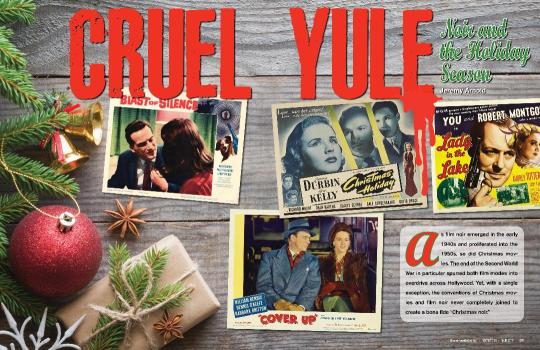
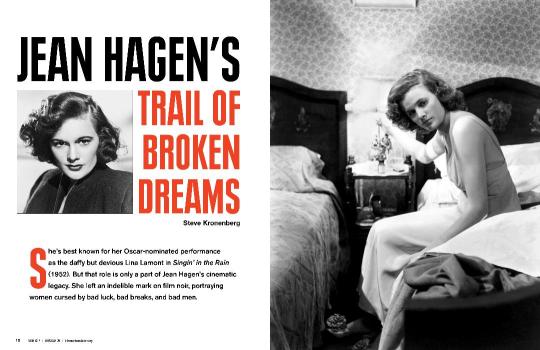

Buy the newly released print edition of NOIR CITY issue No. 39 on Amazon: https://amzn.to/3wYAF2C
13 notes
·
View notes
Text

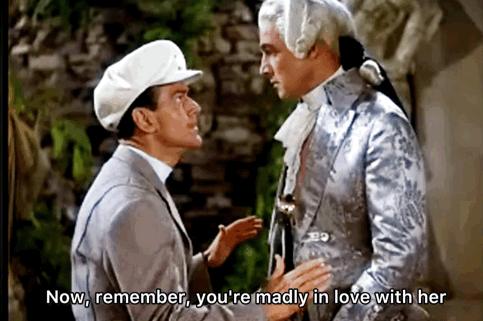
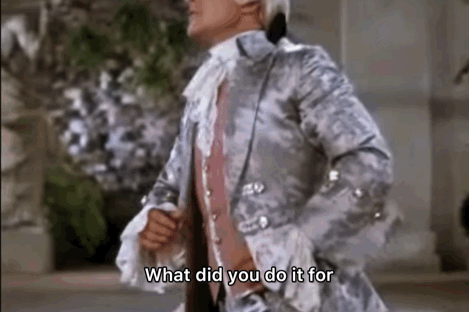
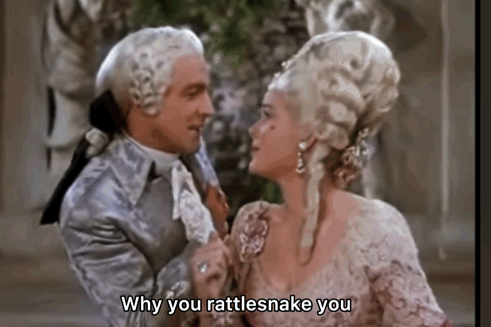





Don (Gene Kelly) finds out Lina (Jean Hagan) got Kathy (Debbie Reynolds) fired because he “liked her” while they film their last silent movie romantic scene
“Oh Donnie. You couldn’t kiss me like that and not mean it.”
“Meet the greatest actor in the world. I’d rather kiss a tarantula”
“You don’t mean that”
“I don’t? Hey Joe! Bring me a tarantula”
Singin’ in the Rain (1952) - Gene Kelly & Jean Hagan
16 notes
·
View notes
Photo


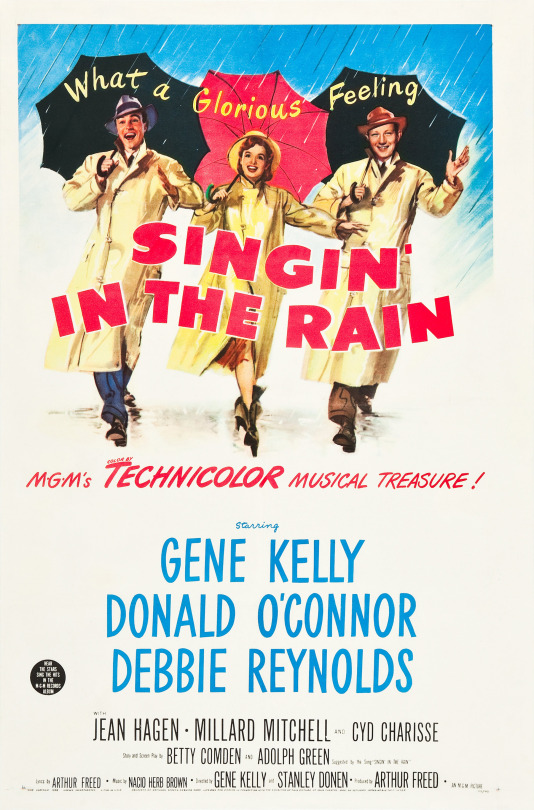
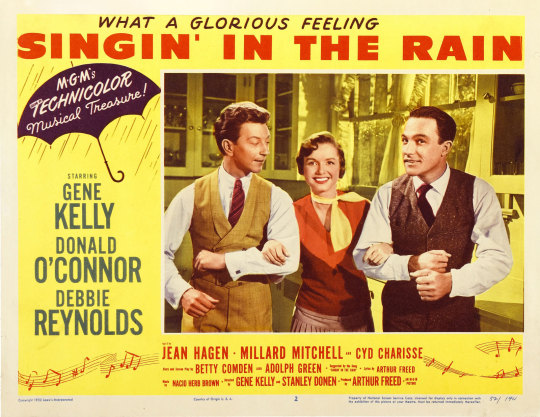

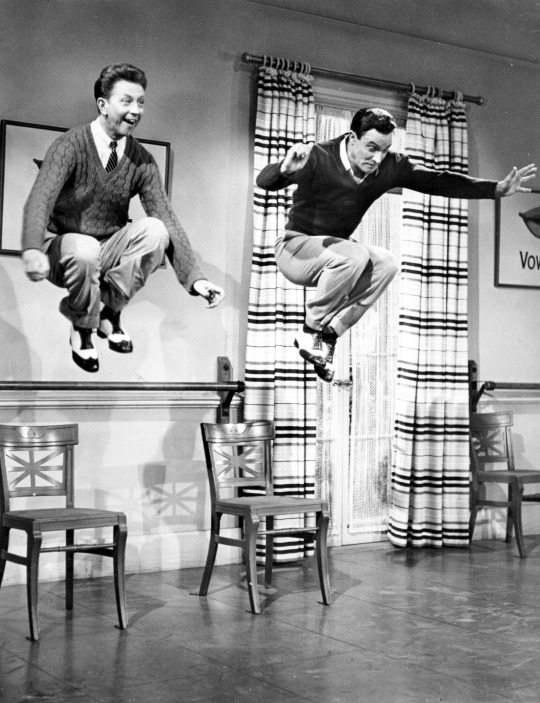
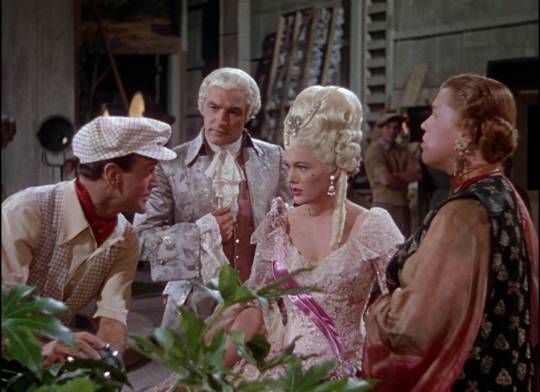

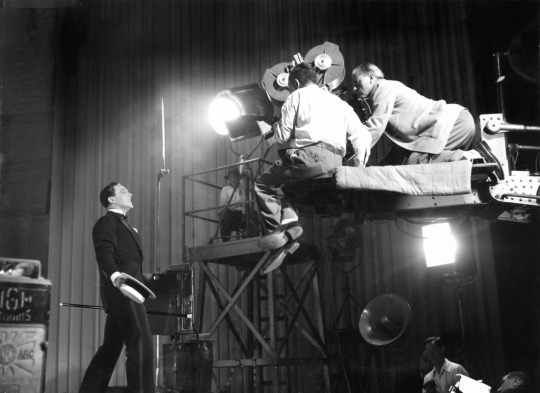
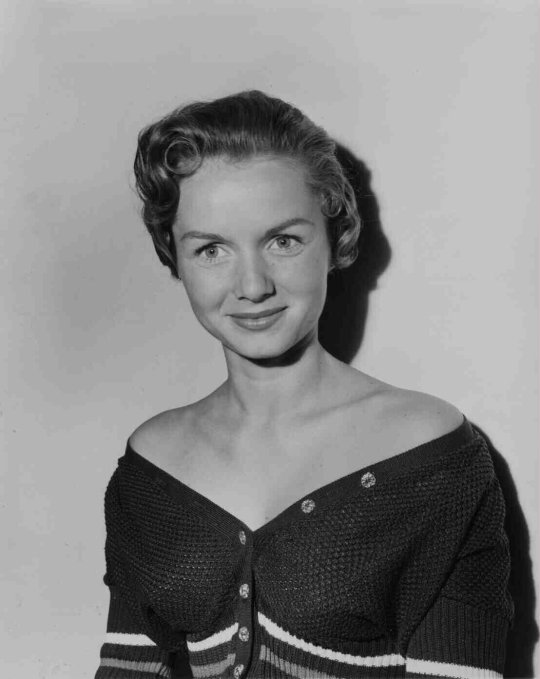
Singin’ in the Rain (1952) Stanley Donen & Gene Kelly
January 9th 2023
#singin' in the rain#1952#stanley donen#gene kelly#debbie reynolds#donald o'connor#jean hagen#millard mitchell#douglas fowley#cyd charisse#rita moreno#mae clarke#favourite
58 notes
·
View notes
Text
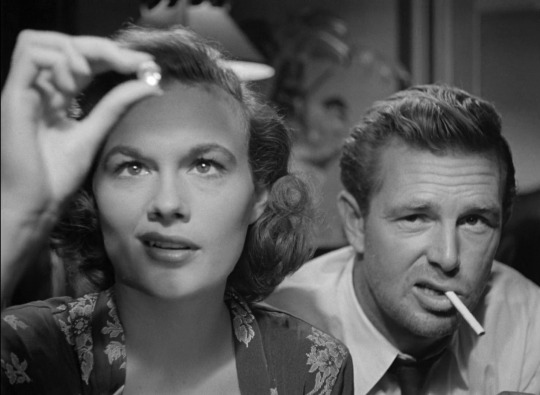
The Asphalt Jungle (1950) dir. John Huston
#the asphalt jungle#john huston#film#cinema#movie#movie stills#film frames#cinematography#Sterling Hayden#jean hagen
19 notes
·
View notes
Text
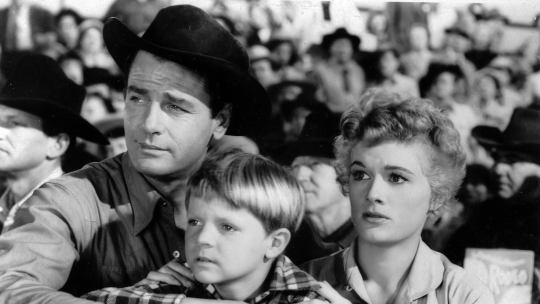
Gig Young-Lee Aaker-Jean Hagen "Arena" 1953, de Richard Fleischer.
8 notes
·
View notes
Photo

Singin’ in the Rain (1952)
This is a Movie Health Community evaluation. It is intended to inform people of potential health hazards in movies and does not reflect the quality of the film itself. The information presented here has not been reviewed by any medical professionals.
Singin’ in the Rain has bright camera flashes during the first scene that follows the opening credits. They are infrequent and non-strobing, but they are sudden and bright. A late dance number has patterned lights all over the screen that may create a minor strobe effect. Immediately after this number, a screen is shown that has brief strobe effects, for about a minute.
All of the camera work in this film is either stationary or very smooth.
Flashing Lights: 4/10. Motion Sickness: 0/10.
Image ID: A promotional poster for Singin’ in the Rain
#Movie Health Community#Health Warning#Actually Epileptic#Photosensitive Epilepsy#Seizures#Migraines#Motion Sickness#MGM#Singin' in the Rain#April#1952#Gene Kelly#Donald O'Connor#Debbie Reynolds#Jean Hagen#Millard Mitchell#Cyd Charisse#Stanley Donen#Rated G
18 notes
·
View notes
Text


Propaganda
Josephine Baker (The Siren of the Tropics, ZouZou)— Josephine Baker was an American born actress, singer, and utter icon of the period, creating the 1920s banana skirt look. She was the first black woman to star in a major motion film. She fought in the French resistance in WWII, given a Legion of Honour, as well as refusing to perform in segregated theatres in the US. She was bisexual, a fighter, and overall an absolutely incredible woman as well as being extremely attractive.
Jean Hagen (The Asphalt Jungle, Singin' in the Rain)—a shimmering star in the cinema firmament! Absolutely iconic as the villainess Lina in singin’ in the rain and makes the picture, to be honest. Nobody played funny-evil-gorgeous the way she does. and that voice!
This is round 3 of the tournament. All other polls in this bracket can be found here. Please reblog with further support of your beloved hot sexy vintage woman.
[additional propaganda submitted under the cut. The famous banana skirt is mildly NSFW.]
Josephine Baker:

Black, American-born, French dancer and singer. Phenomenal sensation, took music-halls by storm. Famous in the silent film era.

Let's talk La Revue Negre, Shuffle Along. The iconique banana outfit? But also getting a Croix de Guerre and full military honors at burial in Paris due to working with the Resistance.

She exuded sex, was a beautiful dancer, vivacious, and her silliness and humor added to her attractiveness. She looked just as good in drag too.


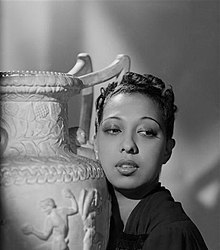
So I know she was more famous for other stuff than movies and her movies weren’t Hollywood but my first exposure to her was in her films so I’ve always thought of her as a film actress first and foremost. Also she was the first black woman to star in a major motion picture so I think that warrants an entry
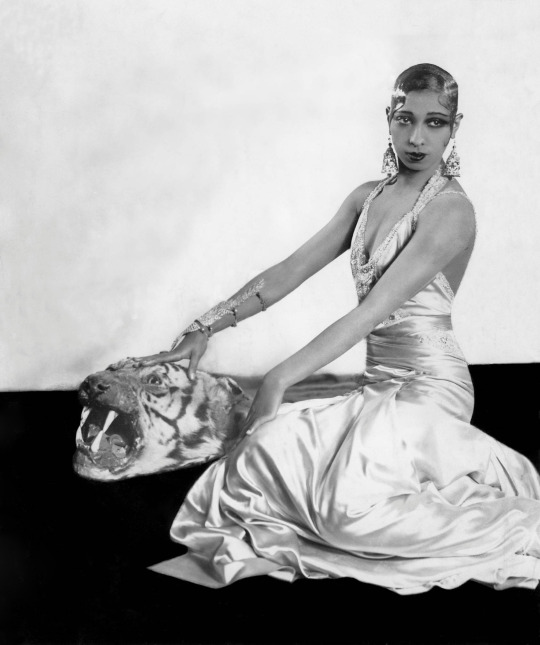
Iconic! Just look up anything about her life. She was a fascinating woman.

Jean Hagen:

Riddle and you shall receive! How could we forget about Jean Hagen! I love a woman who can play really delightfully evil, and it's very fun seeing her other roles after you've seen her as Lina Lamont. Also, she's got an adorable smile and a gorgeous chin.
Her Oscar-nominated performance as Lina Lamont is a wonderful example of being talented enough to make an unsympathetic character difficult to hate. Admittedly her looks also help a lot - in so many films she would have been the romantic lead and it's a shame Lina didn't get a redemption arc.
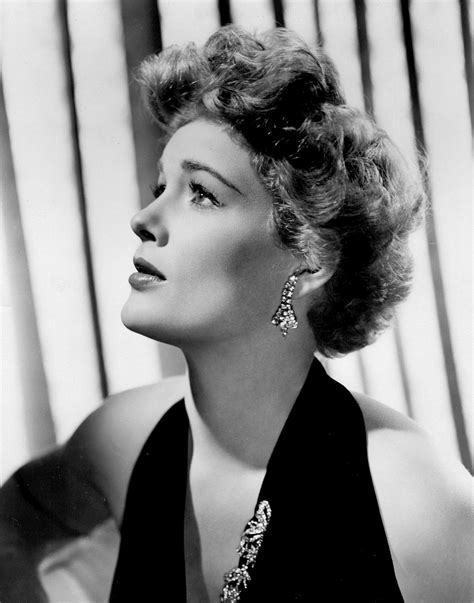
Had a sexy sexy alto register so when she was being dubbed as Lina Lamont by Debbie Reynolds she was dubbing Debbie Reynolds dubbing her. Shoutout to Betty Noyes also.
Linked gifset
did. is anyone. can we please bring attention to her in drag. please god and thank you

If we bring a little joy into your humdrum lives, it makes us feel as though our hard work ain't been in vain for nothin!

134 notes
·
View notes
Text
What a glorious feeling
Script below the break
Hello and welcome back to The Rewatch Rewind! My name is Jane, and this is the podcast where I count down my top 40 most frequently rewatched movies in a 20-year period. Today I will be discussing number four on my list: MGM’s 1952 musical Singin’ in the Rain, directed by Stanley Donen and Gene Kelly, written by Betty Comden and Adolph Green, and starring Gene Kelly, Donald O’Connor, and Debbie Reynolds.
It's 1927 and silent film stars Don Lockwood (Gene Kelly) and Lina Lamont (Jean Hagen) have just premiered another smash hit. To escape from a mob of fans, Don jumps into the car of Kathy Seldon (Debbie Reynolds), who is surprisingly unimpressed by him, which he is both insulted and intrigued by. Weeks later, when Don is still focused on trying to find Kathy again, and his friend Cosmo Brown (Donald O’Connor) is running out of ways to get him to snap out of it, the success of Hollywood’s first talking picture prompts the studio head to turn the next Lockwood and Lamont film into a talkie, and Don’s life – and Hollywood itself – will never be the same.
This is a very important movie to me because in a way, it’s the one that started it all. My love for Old Hollywood began in a movie theater at a 50th anniversary screening of Singin’ in the Rain. I’ve mentioned in several previous episodes that I started getting into Old Hollywood in 2002 – this is why. My mom took me to see it, and then based on my reaction started introducing me to more of her faves from around this era, and here I am, 21 years later, still loving these films. I can’t remember exactly when I watched Singin’ in the Rain the second time; I might have seen it again in 2002, I don’t know. But I believe it was 2003 when we bought it on VHS while on a family road trip. We had a little TV/VCR that we used to set on top of a cooler behind the front seats, held in place with bungee cords. I could not get enough of this movie and insisted on watching it probably way more times than my siblings wanted on that road trip, although I think they enjoyed it too, just not quite to the extent that I did. I watched it seven times in 2003, six times in 2004, three times in 2005, once in 2006, once in 2007, twice in 2009, once in 2010, once in 2011, twice in 2012, once in 2013, twice in 2015, once in 2016, once in 2019, once in 2020, once in 2021, and twice in 2022. I can’t remember when, but at some point I ended up with a DVD in addition to the VHS. And one of my 2022 watches was in a theater for the 70th anniversary. While in many ways that was a very different experience from the first time I saw it, since every moment of the movie was deeply familiar rather than fresh and new to me, it felt no less magical. I still love this movie just as much as, if not more than, the first time I watched it, and I am so grateful that it introduced me to a world of films from generations before my time.
There is so much to love about this movie that I don’t even really know where to start. The dialogue is clever and delightful, the casting was perfect and the performances are brilliant, the costumes, sets, and lighting are gorgeous, and the music makes you feel like you’ll never be unhappy again. In some ways, it’s actually kind of similar to Mamma Mia, in that it’s a jukebox musical. Like how Mamma Mia took popular ABBA songs and loosely draped a story around them, Singin’ in the Rain took a bunch of old songs, mostly written by MGM producer Arthur Freed (who came up with the idea) and Nacio Herb Brown, and tied them together with a story. I will say I feel like the story of Singin’ in the Rain works quite a bit better, mainly because the subject matter fits the songs so well. It was a stroke of genius to make the movie that would feature songs from early talkies be about early talkies. Freed and Brown did write one new song specifically for this movie, “Make Em Laugh,” but it bears a remarkable resemblance to Cole Porter’s “Be a Clown” from the 1948 Freed-produced film The Pirate. Screenwriters Comden and Green wrote the “Moses Supposes” song based on an existing tongue-twister, but all of the other songs in the film had been featured in at least one previous movie. These days, Singin’ in the Rain is such a beloved, iconic movie that many of the songs’ origins are all but forgotten, and they’re generally associated with this picture. But it’s always kind of fun to be watching some random old movie that predates this one and hear one of these songs pop up. Probably my favorite instance of this is in Adam’s Rib, which was number 27 on this list and made in 1949, when Tom Ewell’s character is going to visit his mistress, played by Jean Hagen, he’s whistling “You Are My Lucky Star,” and I love that both that song and that actress ended up in this movie three years later.
A big part of what makes Singin’ in the Rain such a perfect introduction to Old Hollywood is that the songs are from Old Hollywood and the story is about Old Hollywood. It’s so fascinating to watch the characters figuring out the technical aspects of adding sound to a medium that modern audiences automatically associate with sound. But even beyond that, this movie breaks the illusion of Hollywood glamor while still sort of trying to hide behind that illusion, in a way that almost feels like it’s laughing at itself. So much of the story is about how movie magic relies on facades and deception. The movie starts with a red-carpet interview where Don tells of his rise to fame and his motto: “Dignity, always dignity,” while the audience sees flashbacks of his very undignified beginnings. Lina is on screen looking quietly glamorous for about 10 minutes before she finally speaks, revealing what the silence of her films has concealed: her voice is almost unbearably squeaky and obnoxious. So in order to make her presentable in a talking picture – which eventually becomes a musical – her voice is dubbed by Kathy. Initially the plan is to credit Kathy as Lina’s voice and use this to help launch her to stardom, but Lina threatens to sue the studio unless they force Kathy to be her voice indefinitely without credit. I don’t think it was usually quite that dramatic, but uncredited dubbing happened all the time. In previous episodes, I’ve mentioned Marni Nixon, who dubbed the singing for many iconic performances, such as Audrey Hepburn in My Fair Lady and Natalie Wood in West Side Story, without credit at the time, although now her contributions are kind of general knowledge, at least among movie buffs. But we don’t even have to go that far to find an example: it happened in Singin’ in the Rain itself! Betty Noyes, also known for singing “Baby Mine” in the Disney movie Dumbo, sang for Debbie Reynolds in a couple of her songs without credit, notably including “Would You?” which Kathy is meant to be dubbing for Lina. So Betty Noyes sang for Debbie Reynolds when she was singing for Jean Hagen. (Part of the time, anyway. The “Singin’ in the Rain” reprise that Kathy sings for Lina behind the curtain was definitely Debbie Reynolds’s voice.) Even more ironically, when Kathy is dubbing Lina’s dialogue (“Nothing can keep us apart, our love with last ‘til the stars turn cold”), that was Jean Hagen’s normal speaking voice, so Jean Hagen dubbed Debbie Reynolds dubbing Jean Hagen. I just can’t get over how blatantly these filmmakers went, “Hollywood is fake and yes that includes us” – although I suppose it was much less blatant at the time, I’m not sure at what point all of this became so well-known.
Learning about the dubbing didn’t decrease my love for this movie, although some of the other behind-the-scenes trivia kind of did – specifically the fact that nobody seemed to have a very good time working with Gene Kelly because he was so demanding and impatient, particularly with then 19-year-old Debbie Reynolds, who was not a very experienced dancer, which Kelly found exasperating, even though he knew about it when she got the role. Apparently at one point Fred Astaire – also a notoriously demanding perfectionist – found her crying under a piano at the studio and offered to help her with her dancing. She learned fast and committed hard, literally bursting blood vessels in her feet during the “Good Morning” number. Reynolds later famously said that Singin’ in the Rain and childbirth were the two hardest things she ever had to do. Not that she was the only one who worked hard. Gene Kelly was sick with a 103-degree fever when he performed one of the most famous scenes in Hollywood history, dancing and singing to the title song. I used to view this as admirable, but now I’m like, maybe they could have waited to film it until he got better? Similarly, Donald O’Connor, who was smoking four packs of cigarettes a day at the time, had to rest in the hospital for several days after filming the “Make ‘Em Laugh” scene, and again, it’s like, it’s an incredible performance in a great number, but was it really worth going to the hospital for? Both the story within this movie and the story of how it was made raise some very interesting questions about the “point” of motion pictures – as art, as entertainment, and as an industry – that are still being wrestled with today. Personally, I don’t believe anyone should be forced to risk their health for their job, but at the same time I appreciate how dedicated everyone involved was to making this masterpiece the best it could possibly be. It certainly paid off in this instance. It’s easy for me to say now that it would have been worth making a slightly worse movie if that meant protecting the well-being of the actors, but maybe if it was worse I wouldn’t have quite fallen in love with it to this degree and my life would look very different. So I still don’t know how to feel about all this. And I don’t even know how much it matters anymore, given that the only major cast member still alive is Rita Moreno, whom I absolutely would not have recognized without seeing her name in the credits, and I don’t think she personally was injured on this set – although she was originally supposed to sing “I’ve Got a Feelin’ You’re Foolin’” which then got absorbed into the “Beautiful Girl Montage” that she wasn’t part of, which is a major bummer because she deserved a bigger role in this.
Anyway, speaking of complicated feelings, let’s talk about the romantic aspects of Singin’ in the Rain. The romance between Don and Kathy is an important part of the story, and while that’s a little disturbing knowing how terribly Kelly treated Reynolds on set, and that he was approximately twice her age, their characters’ relationship within the movie is mostly very sweet and I don’t really have a problem with it. And I appreciate how much screentime is devoted to the friendship between Don and Cosmo, which Don is shown continuing to value just as much as he always did even after he starts seeing Kathy. It’s always great to see characters refusing to follow the amatonormative idea of a relationship hierarchy, with every other relationship falling far below one’s romantic partnership. I love the scene in Don’s house that leads to the “Good Morning” number partly because it’s an important turning point in the story and it’s a great song, but also because it shows Don and Kathy and Cosmo as a trio, not a couple with a third wheel, which is so lovely to see. But though Don does his best to resist amatonormativity, it still pursues him rather relentlessly in the form of his costar, Lina Lamont. The studio leaks rumors that Don and Lina are romantically involved to increase publicity for their films, and Lina seems to believe them, despite Don’s adamant assertions that, “There is nothing between us. There has never been anything between us. Just air.” Their relationship is yet another example of a Hollywood façade, and one of my favorite scenes is when they’re working on a silent film and pretending to be madly in love when they’re in the middle of a fight. Their scene ends with a kiss, and as soon as the director yells, “Cut!” Don pushes Lina away in disgust, but she is so sold on their romance that she says, “Oh Donny, you couldn’t kiss me like that and not mean it just a teensy weensy bit!” to which he retorts, “Meet the greatest actor in the world! I’d rather kiss a tarantula!” It would be easy to attribute many of Lina’s actions to jealousy after Don falls in love with Kathy, which was definitely an important motivation, but it wasn’t her only motivation. Because while she is portrayed as relatively clueless, she has to know that the rise of talking pictures is bad for her. It’s not just that she’s losing her man, she’s also losing her career. When she tries to use her star power to force Kathy to work solely as her voice, part of that is certainly to get in the way of Don and Kathy’s happiness together, but I would argue that more of it was a desperate attempt to remain in an industry that was moving on without her. Lina is portrayed as the villain, and granted some of the things she does are pretty awful, but at the same time one can’t help feeling sorry for her. She was taken in by the glamor of Hollywood, unable to see that everything from her romance to her popularity was make-believe, and suddenly her entire life is crashing around her. We cheer when the curtain opens to reveal that Kathy is singing for Lina, but we also cry for her a little – at least, I do. I find Lina to be a thoroughly fascinating and compelling character, and Jean Hagen gives one of my all-time favorite performances (she was nominated for an Oscar and absolutely should have won), and I really want to know what happens to her after the events of the movie. Hopefully she realizes that she doesn’t need a man, least of all one who hates her like Don does, and finds a new career that makes her happy.
If being a Lina Lamont apologist doesn’t get me kicked out of Old Hollywood fan circles, this might: I don’t understand why Cyd Charisse is in this movie. I get that the “Broadway Melody” number is a gorgeous spectacle, but it doesn’t have anything to do with anything and it goes on way too long, and in world it makes zero sense. First of all, they have six weeks to basically remake their entire movie, and that number alone would have absolutely taken more than six weeks to put together. Secondly, a big part of the appeal of that number is how colorful everything is, but their film is in black and white. And like, okay, we can suspend disbelief and just accept that, but there is absolutely no way that Lina Lamont would put up with a 15-minute musical number in the middle of her picture, in which, not only does she not appear at all, but Don is dancing very suggestively with another woman. Like, come on. I know that having a random ballet toward the end of a musical was a major thing back then, especially in Gene Kelly films, but that has never made sense to me and it never will. And like, why did they give Cyd Charisse a very distinctive look for most of her part and then change it for the ballet so that she’s barely recognizable? It’s so confusing. Don’t get me wrong, I mean no disrespect to Charisse, she was a wonderful dancer, and I think it’s great that her appearance in this movie helped put her on the map and lead to bigger roles for her, it’s just that that scene is my personal least favorite part of the movie. Although I guess the message of that whole number can be boiled down to, “when romance fails, turn to your hobbies,” which is something I can definitely get behind. So maybe I wouldn’t cut it out entirely; I would just make it significantly shorter so we can get back to the main story faster.
The thing I find so compelling about this movie is that while it exposes Hollywood glamor as a sham, it also shows that when you see through that, there’s often still something valuable underneath. The smoke and mirrors of movie magic add to the entertainment value, but fundamentally, movies are stories, and storytelling is a deep-rooted feature of humanity. Sometimes when I tell people that I enjoy old movies, they assume that means I’m into the fancy costumes and larger-than-life stars, and like, I guess that’s part of it, but mostly I just really enjoy good stories that are told well, and that’s what a lot of old movies are. And it’s not just Hollywood that tries to glamorize people and their stories; our whole society does it, too, only to a slightly lesser extent. Just as Lina needed to conceal her unpleasant voice and the studio felt that Lockwood and Lamont would sell more tickets if people thought they were actually dating, or just as people thought Debbie Reynolds’s voice wasn’t strong enough for all of Kathy’s songs, normal people in everyday life feel the need to disguise facets of their identity that are less socially acceptable. Don’t act too queer, conform to your assigned gender role, don’t infodump about your hyperfixations; in short, put on a show to pretend to be “normal.” But just as nobody is really as glamorous and flawless as movie stars’ personas pretend to be, nobody is really normal either. Hopefully our society will someday get to the point where people don’t have to keep up this façade, and perhaps future movies will reflect that. But for now, it’s difficult to imagine a more perfect illustration of how the film industry reflects society than the layered deceptions of Singin’ in the Rain. It’s sort of halfway between satire and an honest reflection, and it works remarkably well as both. But it’s also very easy to just watch it as a fun musical without thinking too hard about any of this. I just happen to greatly enjoy overthinking the stories I love, and this happens to be one that lends itself to much overthinking, which is one of the many reasons why I love it.
Thank you for listening to me discuss another of my most frequently rewatched movies. It’s getting to the point where I know these movies so well that I’m not really sure how to talk about them to people who haven’t seen them, so if you’ve never watched Singin’ in the Rain and still managed to follow this episode, I’m very impressed. Next up is a movie that I’m pretty sure would be number one on this list if I’d started keeping track about two years earlier because I already had it completely memorized before 2003, but in the 20 years I was tracking I watched it a mere 35 times, leaving it at number three. As always, I will leave you with a quote from that next movie: “Well. Someone’s got to break the ice and it might as well be me. I mean, I’m used to being a hostess, it’s part of my husband’s work, and it’s always difficult when a group of new friends meet together for the first time, to get acquainted, so I’m perfectly prepared to start the ball rolling. I mean, I have absolutely no idea what we’re doing here, or what I’m doing here, or what this place is about, but I am determined to enjoy myself, and I’m very intrigued, and oh my, this soup’s delicious, isn’t it?”
#singin in the rain#stanley donan#gene kelly#donald o'connor#debbie reynolds#jean hagen#the rewatch rewind
6 notes
·
View notes
Text

James Stewart and Jean Hagen in Richard Thorpe‘s CARBINE WILLIAMS (1952) #DailyStewart
47 notes
·
View notes
Text
I got to see one of my favorite movies in a theatre today and this never fails to send me

37 notes
·
View notes
Text
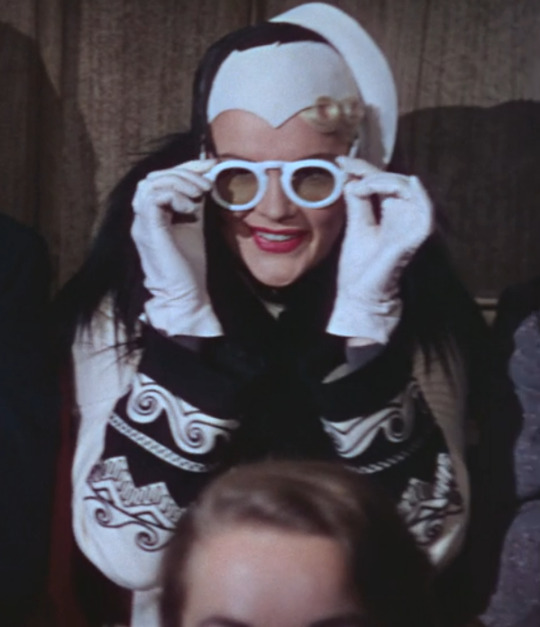

One Dress a Day Challenge
Black and White October
Singin' in the Rain / Jean Hagen as Lina Lamont
This coat and hat are barely seen in the movie, appearing in a short sequence where the cast sneak into an advance screening of their film incognito to judge audience reactions. I love the decoration on the sleeves!
#singin' in the rain#black and white october#jean hagen#one dress a day challenge#one dress a week challenge#movie costumes#musical costumes#old hollywood#lina lamont#1952 films#1952 movies#1920s style#period film#classic movies#classic films#classic hollywood
24 notes
·
View notes